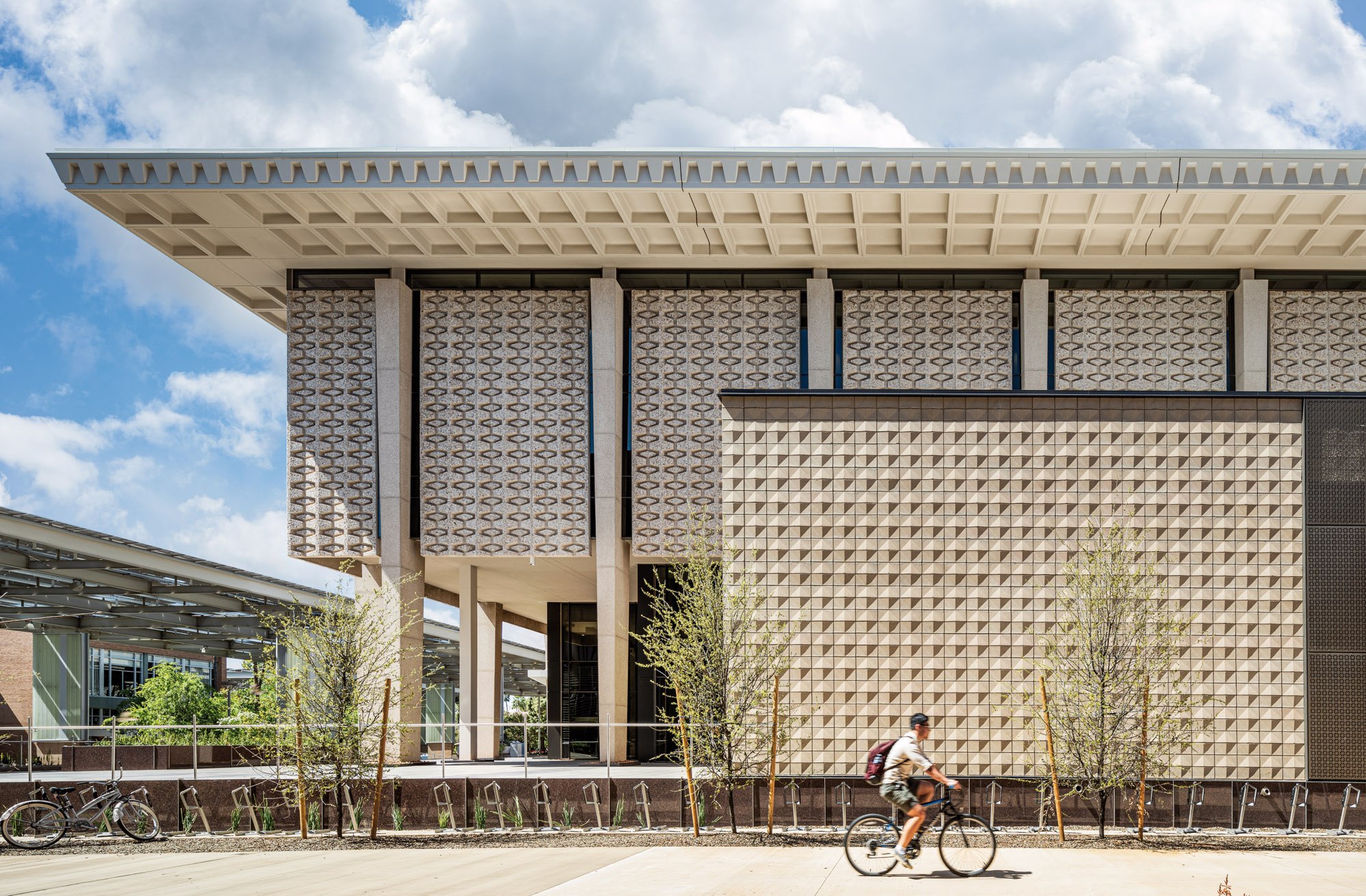The Campuses
This poster compares eight institutions of varying size, geography, age, and classification, showing a figure ground of each campus that color codes buildings by their age and whether they have been recently renovated. We use age as a rough proxy for operational carbon–buildings constructed in the last 30 years are likely to emit less than those built in decades prior. We also explore the extent to which colleges and universities are reinventing their spaces in place. Renovations of older buildings can improve their operational carbon emissions while preserving the embodied carbon in their structure.
In the figure grounds we often see a core of the oldest buildings, with newer buildings both expanding outward and densifying the core. This expansion is not always radial and is focused by the constraints of campus setting and available land. Even when additional land is available, densification can be desirable to keep the campus sized to the pedestrian. The campus that encourages travel by foot and bike reduces the carbon emissions of its campus community. While the oldest structures on a campus are often those that have seen some renovation both for functional reasons as well as the contributions these buildings make to campus history, we also see significant numbers of mid-century buildings renovated since 2000. Renovations conducted prior to 2000 were not hatched as they were less likely to have included improvements in operational carbon.
The variation in campuses was intentional. We were pleased and intrigued to see similar resource efficiency issues were important across the different campuses, but the ways in which mitigation efforts took shape varied a great deal in their specificity. We grouped these similarities in four categories: reduce energy use by buildings, utilize renewable energy sources, manage water use and flow, and reduce waste.
Many schools use STARS (the Sustainability Tracking, Assessment & Rating System) reports to monitor energy use. STARS offers a standard that encourages cataloging a variety of data in a way that can be compared chronologically within an institution or used to compare themselves to others. Many of the facts shared on this year’s poster come from STARS reports.
One of the most interesting STARS data points was the energy usage of buildings per unit of floor area. This statistic accounts for the change over time in the total GSF of an institution, focusing on the energy efficiency of buildings rather than the overall size of the campus. Reductions in this figure can be achieved by adding buildings that are more energy efficient, as well as improving the energy efficiency of existing buildings. According to Architecture 2030: “nearly two-thirds of the building area that exist today will still exist in 2050. Therefore, any transition to a low-carbon/carbon neutral built environment must address both new construction and existing buildings.”
Sources of energy in general, and renewable energy specifically, varies widely by geography. This is evident in the use of renewable energy reported by these eight institutions. Some campuses have on-site renewable energy generation, often solar and/or wind. Others are purchasing renewable energy credits from off-site sources or have access to utility-generated renewable energy. While all the featured campuses still rely to some extent on fossil-fuel derived energy, the transition to renewable sources is one being applied across scale of institution and even beyond higher education.
Reducing waste often relies on human behavior. There needs to be buy-in from not only the people on campus to recycle and compost, but also the contractors and vendors with which an institution partners. Solutions here require collaboration, and different campuses go about this in different ways. While most of our poster talks about reducing carbon emissions, with waste there is the opportunity to go beyond reduction. Composting is sequestration of carbon and can be applied against the carbon footprint of an institution.
Campuses across the country have vastly different relationships to water. Arid campuses have concerns with supply, whereas other campuses have concerns with flooding and stormwater. It is important to note that potable water has a carbon footprint regardless of location, and conservation of potable water is always a means of reducing carbon emissions.
Advancing the Conversation
Recognizing this growing sophistication and complexity, we wanted to ensure that we outlined opportunities for institutions looking to increase their efforts toward carbon and resource efficiency. We grouped these opportunities into three categories: catalog, plan, and implement.
Cataloging one’s space is key to understanding it. Leveraging space analytics to increase utilization and reuse of space can sometimes alleviate or delay the need for new construction. If building new becomes necessary, the understanding of space needs allows one to build the right space for the right reasons for the right resiliency.
Developing a detailed plan for future investment allows for carbon performance to be integrated as a top priority. For instance, for a building that is being constructed in phases, an institution can not only adhere to changing guidelines but plan to keep upgrading systems to the highest performance. See the Duke University School of Nursing for how this works in action.
Renovations can breathe new life into existing assets while reducing both embodied and operational carbon emissions. Renovating can retain sense of place on campus as buildings become indelible parts of an institution’s identity. See the Hayden Library Reinvention as an example.
—
These comparisons build on a 20-year legacy of Comparing Campuses posters that support higher education in finding their common ground and celebrating their unique differences. See how this poster has evolved and compare our collection of campuses side-by-side.






